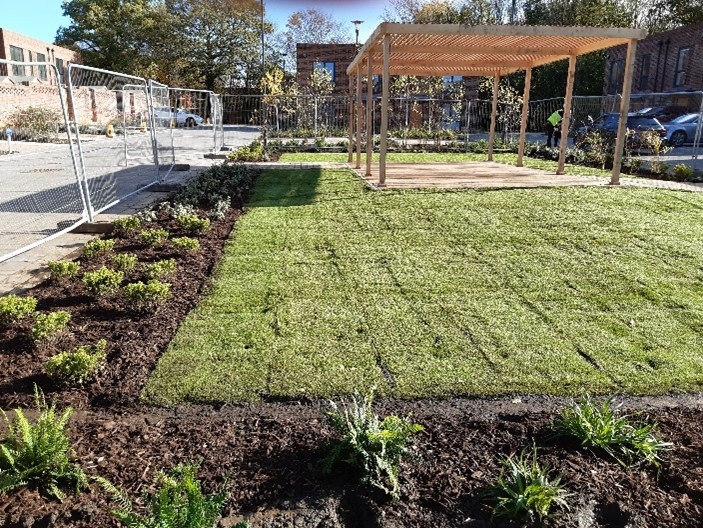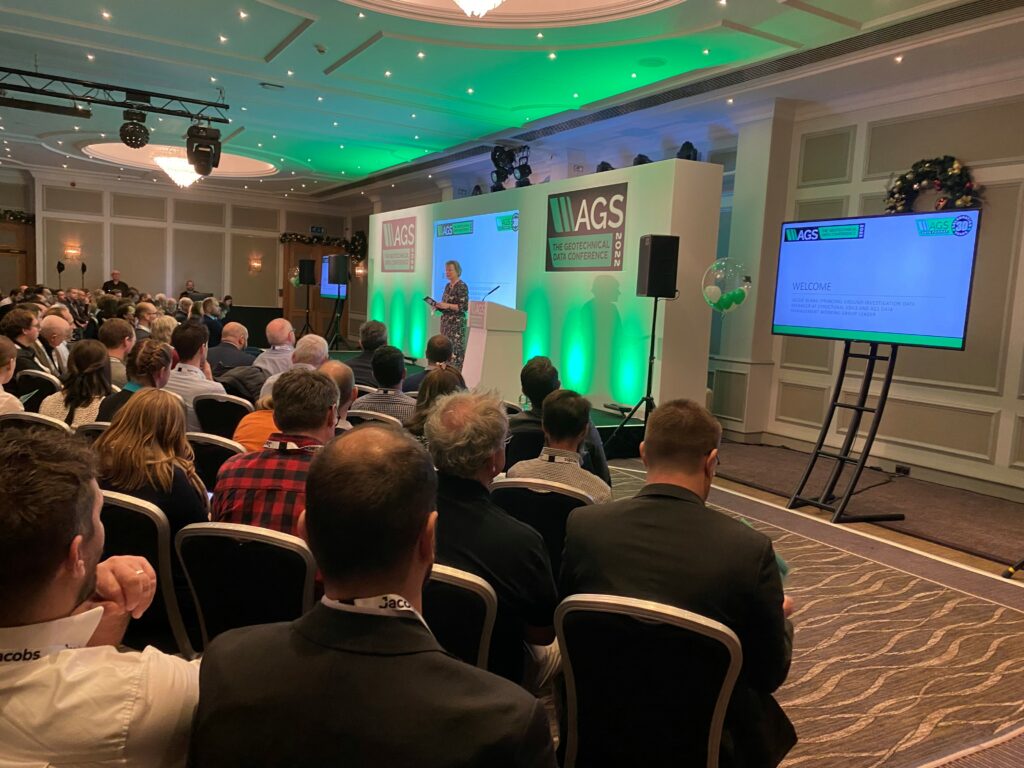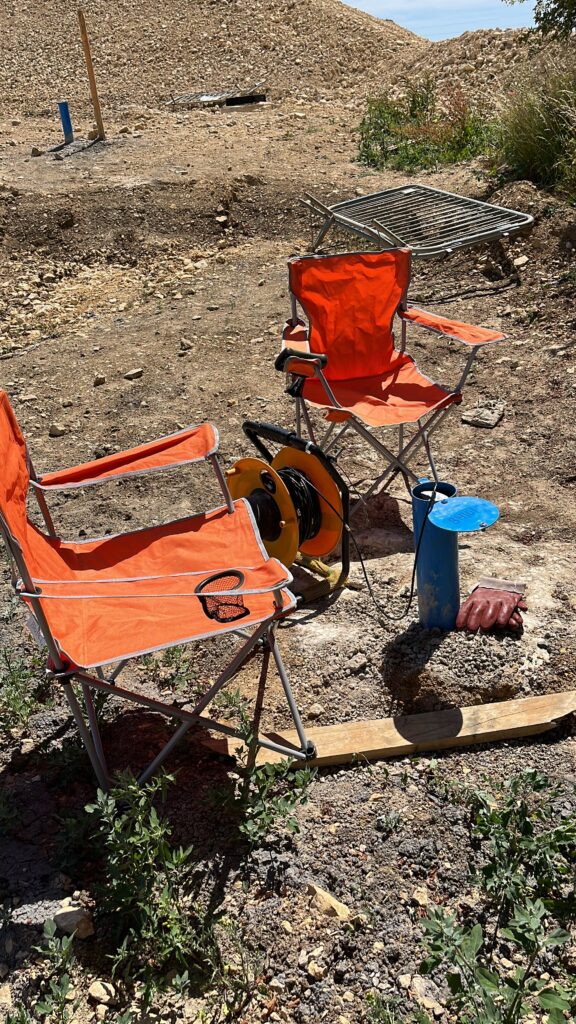
Image credit to Andrew Tranter, Principal Environmental Consultant at RSK
Clean cover systems are one of the most commonly applied remediation techniques deployed by developers within the UK. They are used to reduce the risk of exposure to soils potentially harmful to health and or to reduce contaminant mobilisation by presenting a low permeability barrier to infiltration. Consequently, they can provide both a viable and sustainable solution for mitigating risks. Yet over-familiarity is increasingly leading to poor implementation. A refreshment and reminder on the existing guidance, the advantages, and disadvantages, as well as design considerations of cover systems, are consequently presented below.
A cover system is composed of a single or multiple layers of ‘clean’ materials which are placed above soils that are considered to be potentially harmful to a particular receptor, typically site users on a development site. Their main purpose is usually to remove or reduce the pathway in the source-pathway-receptor conceptual model. However, one or more layers can, as already noted, have other uses, for instance, concerning landfills, a cover or capping layer may also be used to limit surface water infiltration.
Technical guidance on the use of cover systems as a remedial technique was first included within CIRIA special publication 104, ‘Remediation Treatment for Contaminated Land Volume IV’ published in 1995, and CIRIA special publication SP124, ‘Barrier lines and cover systems for containment and control of contaminated land’ published in 1996. However, the use of this technique for the restoration of landfills or mineral extraction sites predated any specific contaminated land guidance. Both of these CIRIA guidance documents outlined some of the factors that should be considered when designing an engineered cover system, for example, the selection of appropriate materials to guard against the upward movement of contaminants through anthropogenic activities, burrowing animals, and capillary action. However, there was no actual guidance given on the appropriate thickness of the cover layer to be required. This was left to the discretion of the designer , increasing the risk of an inconsistent approach between sites and geographies arising.
The British Research Establishment (BRE) subsequently published guidance document BRE465 in 2004. This sought to provide some consistency in the approach to designing cover systems. The document divided cover systems into two distinct types; an engineered covered layer designed to completely break the pathway between the contaminated soils and receptor (as discussed in the CIRIA guidance), and a simple cover layer that reduces the exposure to a receptor. The detail of this BRE guidance was, however, only to focus its content on simple cover system design.
A key question considered within this BRE guidance was to be the level of intermixing between soil layers that could be considered to arise within a domestic setting. The research was to state that disturbance from anthropogenic activities (digging) and intermixing due to natural processes, such as burrowing animals, earthworm activity, and plant roots, was unlikely to exceed 600mm.
Based on these findings, this guidance contained a method for calculating the thickness of the cover, which used 600mm to be the default mixing zone. For a given contaminant of concern (COC), the BRE equation determined how much cover would be required to reduce the concentrations to a pre-determined target concentration/assessment criterion. As a conservative approach, the equation considered that all mixing would occur uniformly across the whole of the mixing zone, but in reality, disturbance (impacted soils being brought to the surface) was likely to be localised. Finally, the maximum depth of the cover was set at 600mm, but this could be altered if there was reasonable justification.
An Excel spreadsheet was provided with the BRE guidance and a simple check graph enabled the user to determine whether a simple cover system was appropriate. If the concentration of the COC was too high, then this would be highlighted by the graph. Advice against the deployment of a simple cover system was also made under conditions where:
- Non-threshold contaminants (i.e. those that may pose a risk at any concentration, such as asbestos) were present,
- other contaminant pathways were present, such as the inhalation of vapours/gas, direct contact with rising groundwater, etc.,
- if there was a risk to groundwater and the need to reduce leachability,
- where sloping ground was present i.e. where a consistent thickness of cover could not be maintained, and
- where in areas deeper excavations were required for ponds, tree planting, fencing, etc.
BRE465 remains to be a commonly applied reference. The NHBC published a technical extra (issue 8) in 2012 on the ‘verification of clean cover system-testing of subsoil and topsoil’. This document has clearly stated that the topsoil should meet British Standard 3882:2007 and has provided details of how many plots on a residential development should be validated. The current NHBC technical standards (2022) Chapter 10.2 (Drives, Paths and Landscapes) further positions that:
- Works should be carried out following a formal remediation statement,
- Topsoil and subsoil should be of a quality that does not pose a hazard to users,
- Old foundations, concrete bases and similar obstructions should be removed from 450mm of finished ground level,
- Appropriate action should be undertaken to restore the physical conditions and drainage characteristics of topsoil and subsoil that has been compacted during construction,
- A minimum thickness of 100mm topsoil is required.
A key message is that even if the NHBC is not involved with a development, it is now considered as ‘ordinary care’, as their guidance is followed when designing and validating a cover system as a matter of normal practice.
Of further note then with familiarity, it has almost become standard to apply a 600mm clean cover system. Sometimes, but not always, this is underlain by a marker layer in private gardens. The presence or absence of a marker layer should always be clearly and explicitly described in the remedial strategy. Such reasoning is too often absent or simply inferred. Next in regards to 600mm this may indeed be adequate to reduce the risk to an acceptable level, however, there is again often little or no justification to the design. Indeed this depth is based on the mixing zone from the BRE guidance, but the purpose of the guidance was not to set a definitive depth for a cover system. Assessment criteria derived using the Environment Agency’s contaminated land exposure assessment (CLEA) model takes into account exposure to site users within the top 1 metre of soil. Also, if a landscaped area is planted with trees then the roots will extend beyond a metre depth. The depth of the cover system should always be based on its specific setting. In summary, the thickness of a cover layer should again always be clearly and implicitly described in the remedial strategy. Such reasoning is once again too often absent.
Overall, the advantages of specifying a clean cover system are that it can negate the requirement for the removal of a contamination source; is generally straightforward for a groundworker to implement, and is widely accepted by a Local Authority. The disadvantages are that to often to little consideration is given to the appropriate design of cover systems. Furthermore; where ground levels cannot be raised, the soils is excavated and removed to accommodate the cover system. The removed soil can either be disposed of off site or reused in accordance with a Materials Management Plan (MMP). Other risk assessment or remedial measures may be able to reduce the quantity of soil requiring replacement and /or disposal. Indeed, the need on occasion of some cover systems can be avoided if a detailed risk assessment is carried out.
In conclusion, the use of a cover system can be a very reasonable and cost-effective remedial solution to use, as long as they are documented, designed then implemented with thought and critical thinking. However, the technique is so widely used that with over-familiarity it is perhaps sometimes abused. It may be that as consultants contractors and developers we should take the opportunity to reflect and remind ourselves that we must ensure that a consistent and critical approach is applied. Lastly, let’s never forget to validate!
The National Contaminated Land Officers Group (NCLOG) cover systems subgroup are currently working on a new guidance document, so please keep a look out.
Table 1. Cover systems at a glance
| What is a cover system? |
| Cover systems fall into two categories: firstly, a simple cover layer is typically composed of one or two layers (topsoil/subsoil) of ‘clean’ material that reduces the exposure to potentially harmful substance(s) in the strata it is placed over.
Secondly, an engineered cover system comprises one or multiple layers which prevent contact within the underlying soils. Each layer may be designed for a specific purpose such as reducing infiltration, capillary break, no-dig later, etc. |
| Design considerations (examples) |
| 1) Purpose of the cover system (simple or engineered) |
| 2) Topography of the site |
| 3) Landscaping details |
| 4) Suitability of the cover soils |
| 5) Drainage/groundwater |
| 6) Depth of cover |
| 7) Sustainability (removal of soils for off-site disposal) |
Article provided by Andrew Tranter, Principal Environmental Consultant at RSK




